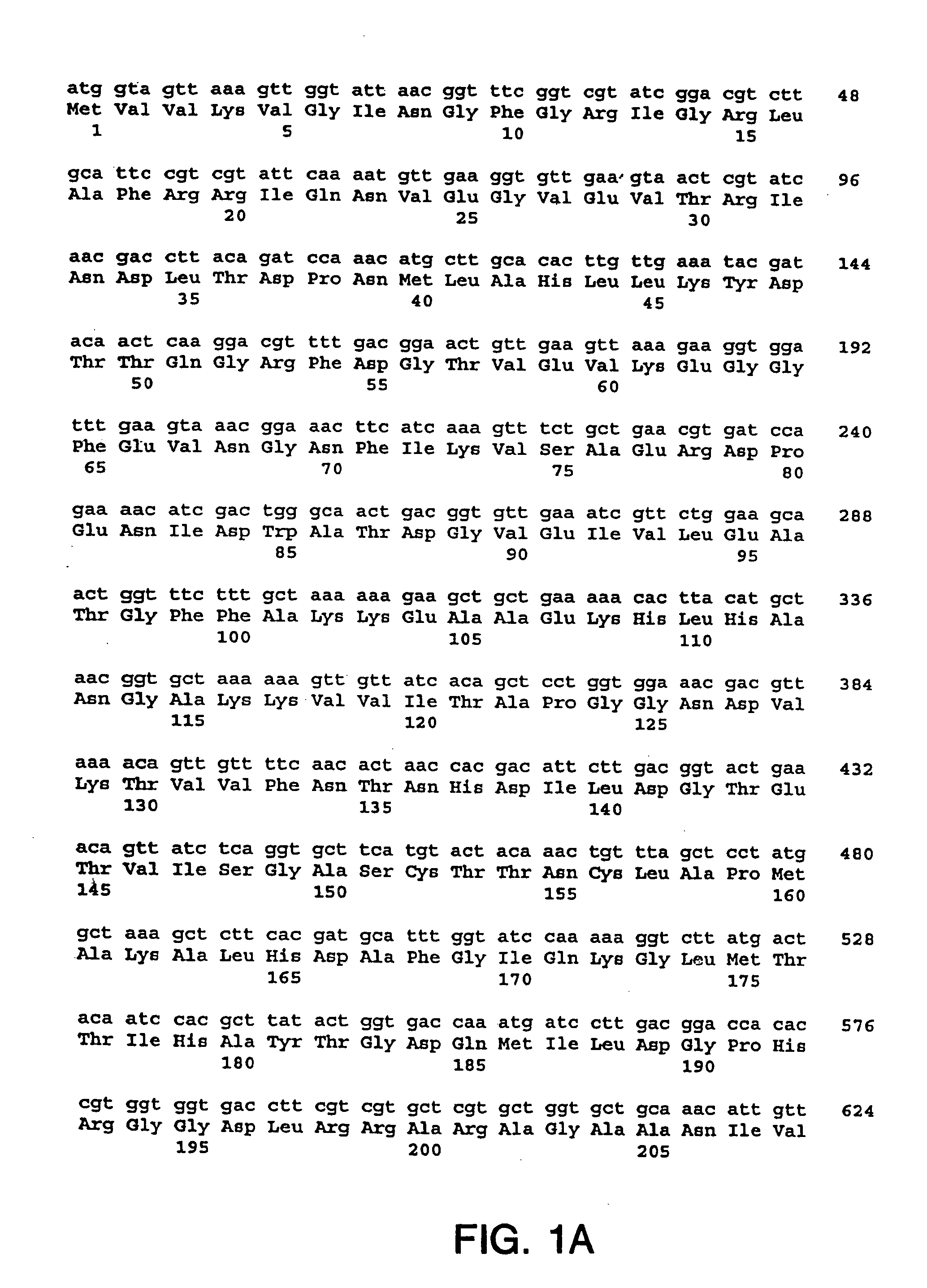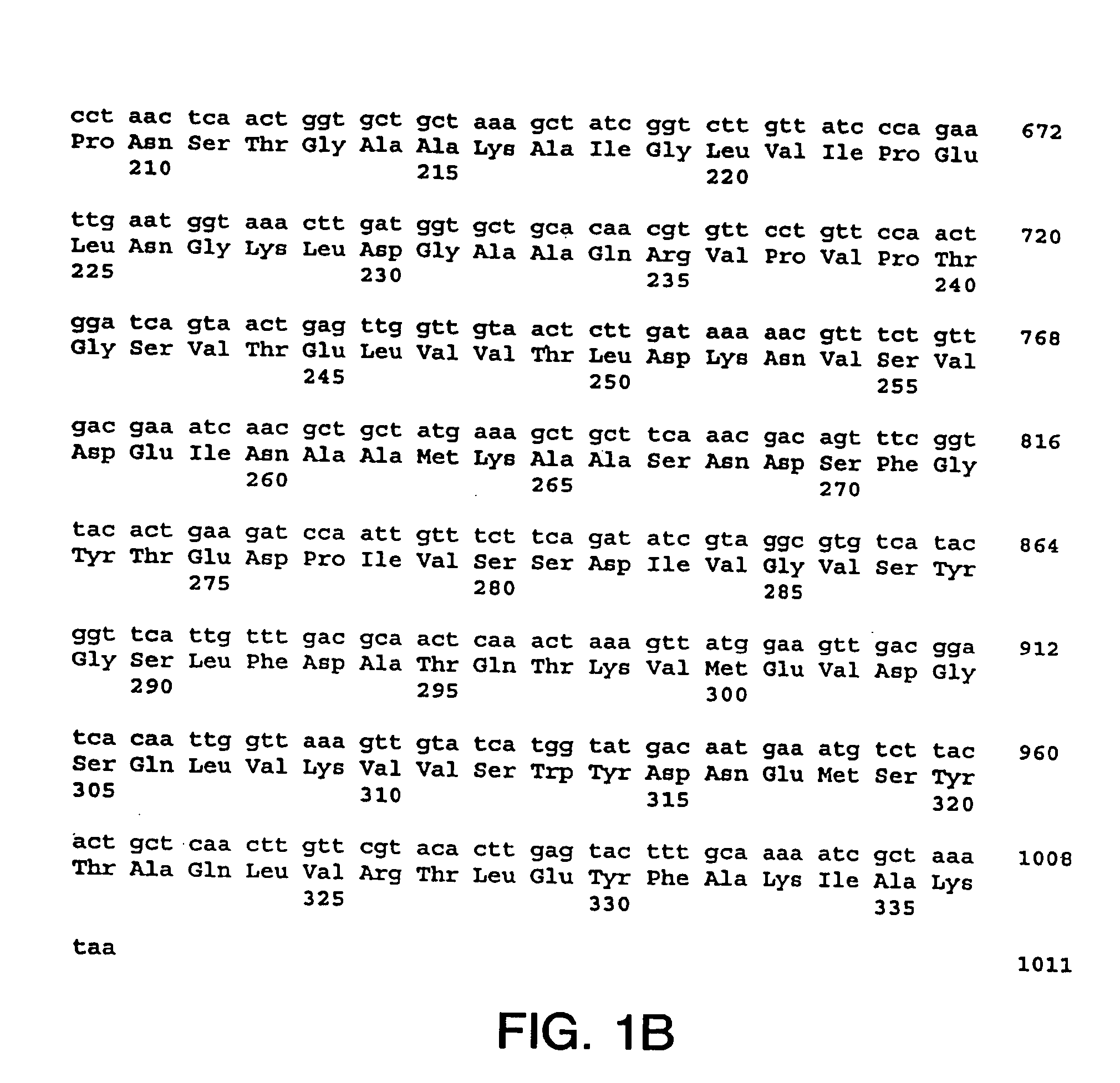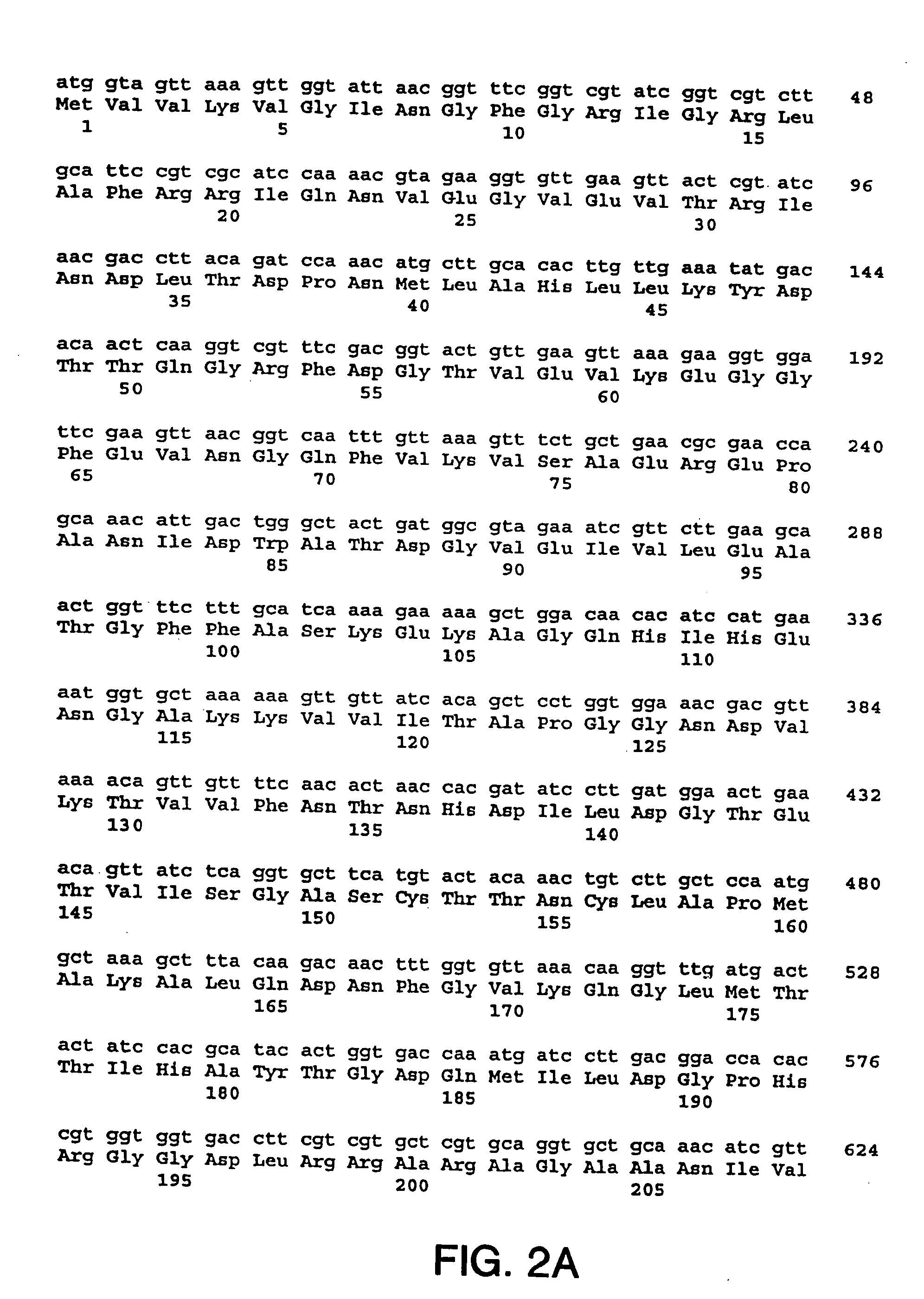Immunization of dairy cattle with chimeric GapC protein against Streptococcus infection
a technology of chimeric gapc and streptococcus, which is applied in the direction of snake antigen ingredients, bacterial antigen ingredients, peptide sources, etc., can solve the problems of i>s. uberis /i> being largely ineffective in conventional killed vaccines, affecting the survival rate of uberis, and causing major economic losses to the dairy industry yearly, etc., to achieve efficient clearance of the invading organism
- Summary
- Abstract
- Description
- Claims
- Application Information
AI Technical Summary
Benefits of technology
Problems solved by technology
Method used
Image
Examples
example 1
Preparation of Chromosomal DNA
[0208] A clinical S. dysgalactiae isolate from a case of bovine mastitis (ATCC Accession No. ATCC43078) was obtained from the American Type Culture Collection (10801 University Boulevard, Manassas, Va. 20110-2209), and was used as a source of DNA. The organism was routinely grown on TSA sheep blood agar plates (PML Microbiologicals, Mississauga, Ontario) at 37° C. for 18 hours, or in Todd-Hewitt broth (Oxoid Ltd., Hampshire, England) supplemented with 0.3% yeast extract (THB-YE) at 37° C., 5% CO2.
[0209] Chromosomal DNA was prepared from S. dysgalactiae grown in 100 ml of THB-YE supplemented with 20 mM glycine for approximately 6 hours, until an A600 of 0.8 to 1.0 was reached. Cells were harvested and re-suspended in 50 mM EDTA, 50 mM Tris-HCl, 0.5% Tween-20® (Sigma, St. Louis, Mo.) and supplemented with RNase A (200 mg / ml), proteinase K (20 mg / ml), lysozyme (100 mg / ml) and mutanolysin (100 mg / ml). (all enzymes purchased from SIGMA, St. Louis, Mo.). Fo...
example 2
Amplification and Cloning of gapC Genes from S. dysgalactiae, S. uberis, S. parauberis, S. agalactiae and S. iniae
[0211] The polynucleotide sequences encoding GapC from S. dysgalactiae, S. uberis, S. parauberis, S. agalactiae and S. iniae were initially isolated from chromosomal DNA by PCR amplification. The primers used to PCR-amplify the gapC genes from all species were gapC1 (SEQ ID NO:1) and gapC1r (SEQ ID NO:2), shown in Table 1. In the table, underlining denotes nucleotides added to the original sequences (i.e., nucleotides added to the 5′ end of the original sense strand sequence and to the 3′ end of the original anti-sense strand sequence, respectively, of the gapC coding region being amplified ), and bolding indicates the location of restriction endonuclease recognition sites.
[0212] PCR was carried out using Vent DNA polymerase (New England Biolabs, Mississauga, ON, Canada). A reaction mixture containing 0.2 μg of genomic DNA, 1 pM of each of the preceding primers, 100 pM...
example 3
Sequencing of gapC Genes
[0215] The genes isolated and cloned in the preceding examples were sequenced using fluorescence tag terminators on an ABI 373 DNA automatic sequencer (Applied Biosystems, Emeryville, Calif.) at the Plant Biotechnology Institute (PBI, Saskatoon, Saskatchewan, Canada).
[0216] The nucleotide sequences so determined, and the corresponding amino acid sequences deduced therefrom, are shown in FIGS. 1 through 5.
PUM
| Property | Measurement | Unit |
|---|---|---|
| w/w | aaaaa | aaaaa |
| pH | aaaaa | aaaaa |
| pH | aaaaa | aaaaa |
Abstract
Description
Claims
Application Information
 Login to View More
Login to View More - R&D
- Intellectual Property
- Life Sciences
- Materials
- Tech Scout
- Unparalleled Data Quality
- Higher Quality Content
- 60% Fewer Hallucinations
Browse by: Latest US Patents, China's latest patents, Technical Efficacy Thesaurus, Application Domain, Technology Topic, Popular Technical Reports.
© 2025 PatSnap. All rights reserved.Legal|Privacy policy|Modern Slavery Act Transparency Statement|Sitemap|About US| Contact US: help@patsnap.com



